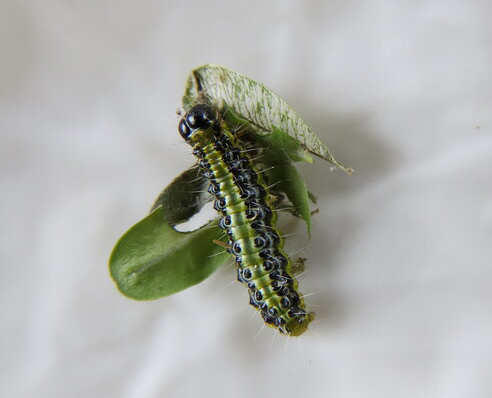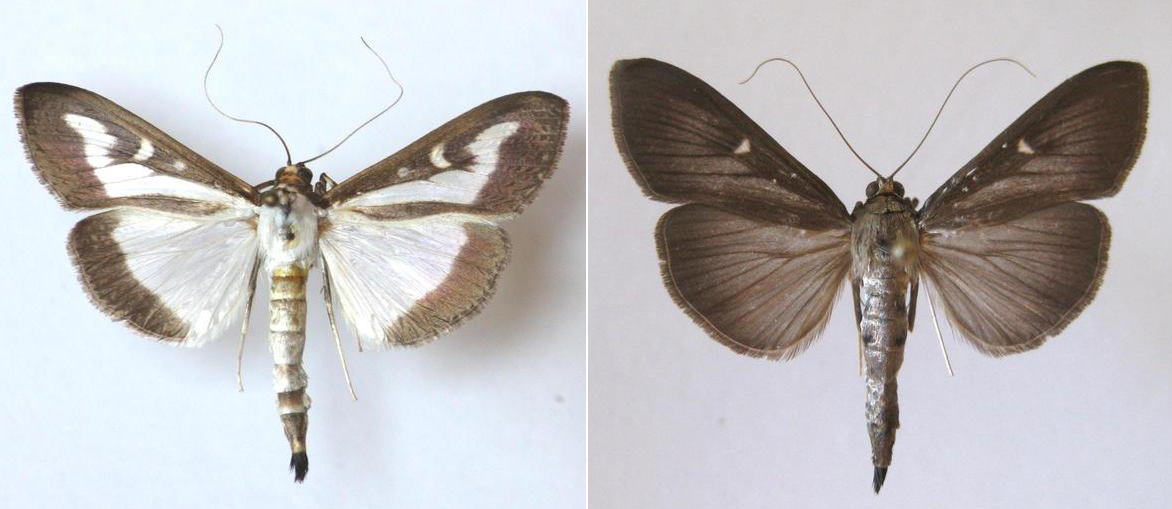What growers and landscapers need to know about box tree moth
Box tree moth will destroy most boxwood shrubs in the country if it becomes established. Growers and landscapers can help by protecting newly planted boxwoods.

On May 28, 2021, the U.S. Department of Agriculture’s Animal and Plant Health Inspection Service (APHIS) announced that it had confirmed the presence of box tree moth, Cydalima perspectalis, in the continental United States and is working to contain and eradicate the invasive pest.
According to the press release from APHIS, “Between August 2020 and April 2021, a nursery in St. Catharines, Ontario, shipped boxwood (Buxus species) that may have been infested with box tree moth to locations in six states—25 retail facilities in Connecticut, Massachusetts, Michigan, New York, Ohio and South Carolina—and a distribution center in Tennessee.”
The box tree moth was detected at three locations in Michigan this spring, but the Michigan Department of Agriculture and Rural Development (MDARD) and USDA APHIS have removed the threat in those locations.
Michigan State University Extension is partnering with MDARD and USDA APHIS to implement an early detection insect trapping program with citizens to learn if the box tree moth has been introduced elsewhere in Michigan. While MDARD nursery inspectors are actively inspecting commercial boxwood crops for box tree moth, MSU Extension is also asking nursery growers who currently grow boxwood or landscapers who have recently installed boxwoods in 2020 or 2021 to check them for signs of infestation as described below, to consider using box tree moth pheromone traps, and to report any positive or suspicious finds.
Signs of the box tree moth
Box tree moth caterpillars only feed and reproduce on boxwood (Buxus spp.). First, you will see the beginning of defoliation of the boxwood leaves (Photo 1). If you begin to see signs of damage, check the boxwood plants for caterpillars (0.25 inches after egg hatch to 1.5 inches long when mature), which are lime green with black stripes and have white spots and hairs (Photo 2). The caterpillars have a shiny black head. As feeding progresses, caterpillars eat the leaves and bark, leaving only the midribs of leaves (Photo 3). With extensive feeding damage, you will see webbing from caterpillar silk and the eventual death of the plants.


The adult moths are distinctive and have both a light morph (iridescent white wings with brown border, brown body [Photo 4]) and a dark morph (brown body and wings with white forewing spots [Photo 5]).

If you spot any of these signs or the adult moths when scouting, please report sightings to MDARD's Eyes in the Field.
Protecting young boxwood plants in nurseries and landscapes
MSU Extension is partnering with the MDARD and USDA APHIS to implement an early detection program for box tree moth throughout Michigan. Nursery growers and landscapers are welcome to participate in the early detection trapping program.
Please be aware that at this point we must notify USDA APHIS of any positive finds of box tree moth in Michigan. If caterpillars or moths of box tree moth are found, it is likely that infested plants will need to be treated or removed, and preventive treatments of boxwoods in the area may be initiated. We sincerely hope we do not find any in Michigan, but if we do, early detection is our best chance of preventing establishment and spread.
Nursery growers should spray all boxwood shrubs grown in containers or in the field two times this season (late July and early September) with a pyrethroid insecticide labeled for use in nurseries (i.e., bifenthrin, cyfluthrin, permethrin, resmethrin, cypermethrin, lamba-cyhalothrin, sumithrin).
Landscapers who purchased and planted boxwoods within the last year should consider implementing a precautionary spray program. MSU Extension recommends landscapers or homeowners spray boxwood shrubs twice this summer (in late July and early September) with bifenthrin (several ready-to-use products available at the garden center) or any pyrethroid insecticide for homeowner use. Pyrethroid insecticides are those where the active ingredient ends in thrin, for example cyfluthrin, permethrin, resmethrin, cypermethrin, lamba-cyhalothrin, sumithrin.
Alternatively, landscapers or homeowners can also spray a Bacillus thuringiensis (Bt) product once every two weeks. Bt is a bacterium that kills insects when ingested. There are subspecies of Bt that affect specific types of insects; kurstaki is the subspecies that specifically targets caterpillar larvae. Look for product labels that say Bacillus thuringiensis subsp. kurstaki (Btk).



 Print
Print Email
Email



